Image Credit: Image #1: Tai Viinikka / CC BY-NC-ND 2.0 / Flickr
Image Credit: Image #1: Tai Viinikka / CC BY-NC-ND 2.0 / Flickr Construction of SolarCity's new manufacturing plant in Buffalo, N.Y., is ahead of schedule. Manufacturing is set to begin next year.
Image Credit: Image #2: SolarCity
Earlier this summer, Dow Chemical abandoned its building-integrated photovoltaic (BIPV) roofing shingle business after a run of less than five years. SolarCity, the country’s biggest solar installer, is betting that corner of the market still holds untapped potential.
In a conference call with financial analysts earlier this month, SolarCity Chairman Elon Musk disclosed that when the company’s huge new manufacturing plant in Buffalo, New York, opens next year, the factory will produce BIPV shingles as well as conventional photovoltaic (PV) modules.
“It’s a solar roof, as opposed to modules on a roof,” Musk said, according to an article published by Business Insider. “I think this is really a fundamental part of achieving differentiated product strategy, where you have a beautiful roof. It’s not a thing on the roof. It is the roof, which is a quite difficult engineering challenge and not something that is available anywhere else.”
Neither Musk nor SolarCity CEO Lyndon Rive, Musk’s cousin, offered many details about the venture. Rive said that SolarCity would concentrate on the 5 million new roofs built every year in the U.S., so the company wouldn’t “cannibalize” its ongoing business of installing PV panels on houses that are already built.
“So there [is a] huge market that is sort of inaccessible to SolarCity because people know they are going to have to replace the roof and you don’t want to put solar panels on a roof you know you are going to replace,” Musk said. “However, if your roof is nearing end of life, and you have to get a new roof anyway… why not have a solar roof that is better in many other ways as well?”
Problems that Dow ran into
Dow couldn’t make that formula work. The company launched Powerhouse shingles in 2011, but the copper indium gallium selenide (CIGS) cells were not as efficient as PV modules that use crystalline silicon, plus they were more expensive. Pricing information posted at the Dow website suggested the solar premium for Powerhouse shingles added up to about $5 per watt, some 40% more than today’s average price for silicon-based PV modules.
Dow introduced a beefed-up version of the panels last year. They had better power density and were easier to install, the company said, but that wasn’t enough. Dow pulled the plug on June 28, 2016, with an announcement that it would stop manufacturing the shingles and would no longer provide design services for new projects.
SolarCity didn’t say how its BIPV shingles would be made, or disclose how much they would cost. PV-Tech reported that the shingles wold be custom-made for each installation and would be delivered in the form of a kit to be installed by SolarCity.
New solar panel plant is huge
SolarCity’s new plant measures a sprawling 1.2 million square feet, and will be capable of turning out 10,000 solar panels a day when it’s fully up to speed, a CNBC report said. That adds up to a total solar capacity of 1 gigawatt of electricity a year.
The factory is being constructed with a lot of help from the state of New York. In May, CNBC reported, New York’s Public Authorities Control Board approved a grant of $485.5 million, part of a total of $750 million New York will chip in to build and equip the plant. Once complete, the plant will be owned by New York and leased to SolarCity.
With SolarCity producing its own solar panels, the company becomes a vertically integrated operation, controlling everything from production to installation. At the same time, Musk’s Tesla electric-car company, which is planning to buy SolarCity, is building a “gigafactory” of its own in Sparks, Nevada, to make lithium ion batteries. The batteries would help drive down the cost of powering Tesla’s electric vehicles, but it also would increase Tesla’s capacity to produce its Powerwall storage batteries for PV systems.
“Batteries are the missing piece in allowing sustainable energy to scale up to 100% of our energy needs,” Tesla co-founder and chief technology officer J.B. Straubel told KQED. “We’re confident that eventually just about every vehicle on the road will move to being electric. That’s changing the transportation landscape. That’s changing the energy landscape. It is changing the world.”
With a big bump in capacity for solar panels — both conventional and building-integrated varieties — plus more battery capacity, SolarCity would seemingly be poised for real PV dominance. But in the short term, it hasn’t been easy sailing. The company has yet to make a profit, and stock prices have dropped from a high of $57 last December to less than $24 in mid-August. Earlier this week, the company announced a corporate restructuring that will include layoffs and reduced executive pay. CEO Rive will see his salary go from $275,000 to $1 a year.
Weekly Newsletter
Get building science and energy efficiency advice, plus special offers, in your inbox.

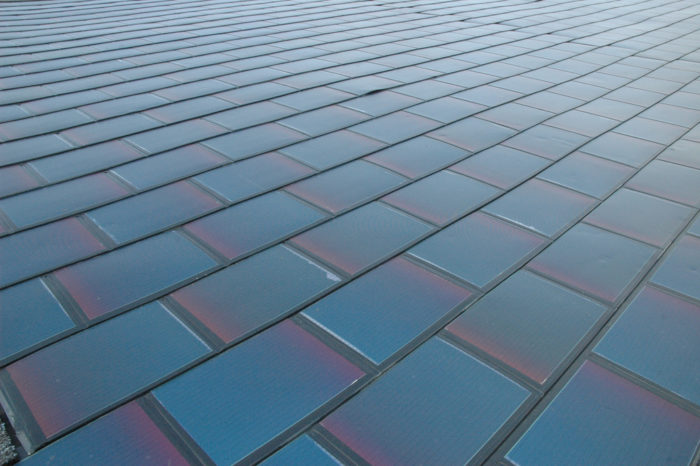




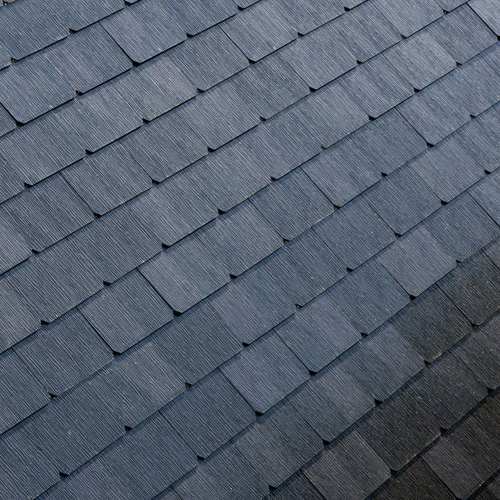
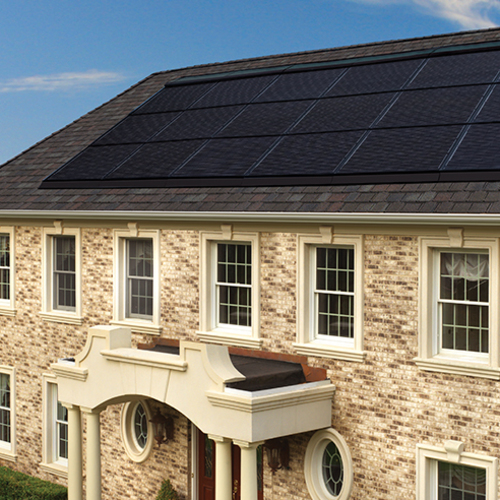
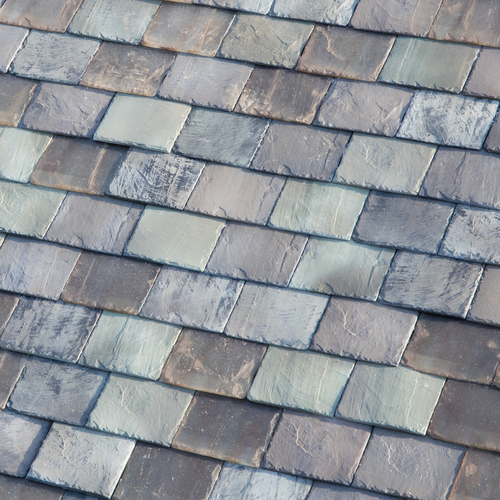
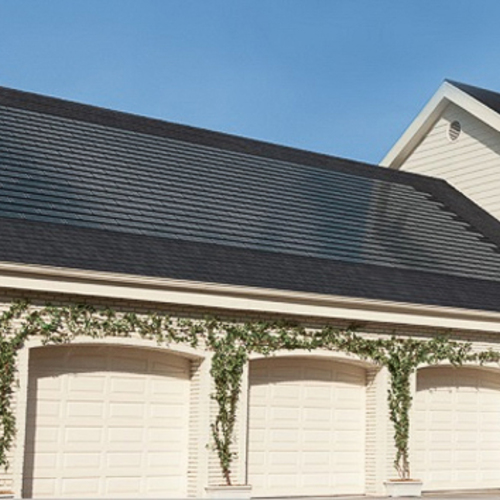






2 Comments
Solar roof
I think "solar shingles" are a presumption. The roof may not take that form at all. Panels perhaps with opening hatches for fire safety, and pre molded for vent stack penetration may be how it is designed. As for the Dow shingles, 5 years is an eternity in the PV industry. At $5 watt then compared to SolarCity at 70 cents watt, its a new ballgame. Integrated to Powerwall 2 with its pre installed inverter, due in November, this could catch on.
Let's not re-try a failed system like Dow's
IIRC, the Dow shingles are a lower grade PV, not producing as much energy. But at even twice the price of common PV/w, the $10-30k you may make up by assuming the cost of replacement roof shingles probably wouldn't get you near the cost of covering the whole roof with it.
Raw cost aside, it does make sense to try to avoid two roof coverings (PVs over shingles).
That's a challenging proposition on existing structures, though. You'd almost certainly lose optimum orientation to the sun, and would have to make up for it with more PV units. Maybe a coating over the roof sheathing like a commercial roof, with PVs attached directly? Or use some form of thin PV coating over steel roofing?
On new construction, it may be easier. Instead of shingles, why not just integrate solar panels in SIPs for the roof sheathing? You'd want a drop-in slot to be able to easily install, remove, and access the panels and wiring for maintenance. That seems the most challenging part, since it would need to be sealed, with waterproof components and drainage in each "slot." But as a manufactured SIP, would that be so hard?
What about using an Insul-Deck type concrete "SIP" instead, to avoid issues with plywood sheathing exposure to moisture?
Regardless, to keep costs low, you'd probably want to use the existing inexpensive and successful materials. So unless there's some unknown breakthrough in actual shingles, I think the shingle look would be out. You'd probably have to have non-functional decorative pieces at edges.
Log in or create an account to post a comment.
Sign up Log in